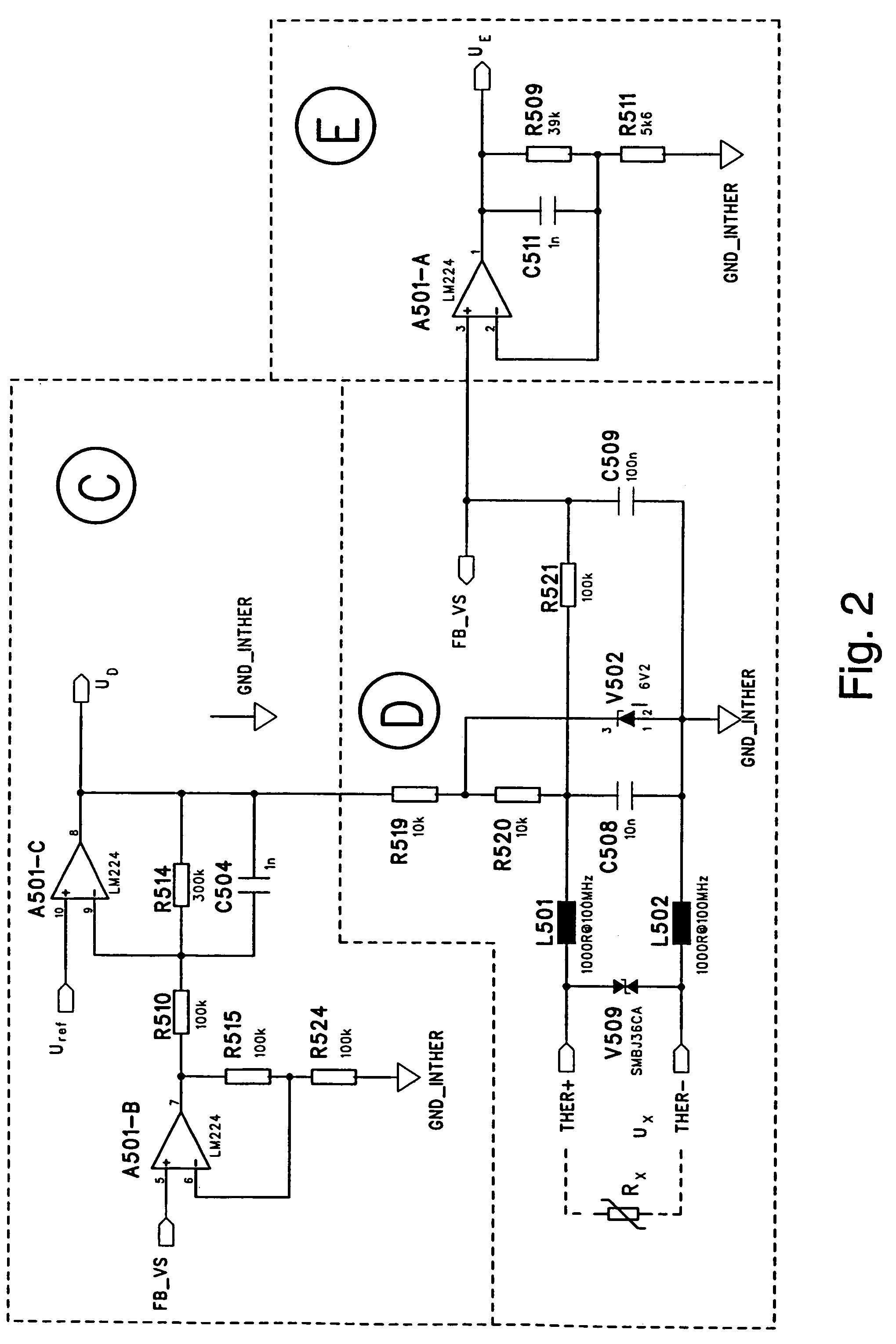Isolated measurement circuit for sensor resistance
a technology of resistive sensor and isolation circuit, which is applied in the direction of heat measurement, mechanical actuation of burglar alarms, instruments, etc., can solve the problems of poor response, difficult to indicate a short circuit, and non-linearity of isolation transformers
- Summary
- Abstract
- Description
- Claims
- Application Information
AI Technical Summary
Benefits of technology
Problems solved by technology
Method used
Image
Examples
Embodiment Construction
[0024]FIG. 1 illustrates an exemplary sensor measurement electronic circuit as a block diagram. The dotted line limits the area of isolated measurement electronics, with a SELV electronic circuit on the outside.
[0025]An exemplary block A comprises a secondary winding of triple-insulated wire added to the ferrite transformer in a DC / DC switching-mode power supply that is already included in the measurement device. This provides the isolated measurement electronics with the required electric power, typically 15 V, 10 mA. Other power supply configurations with the required insulating strength can also be used.
[0026]An exemplary block B includes means for generating a regulated DC voltage, such as 12 V, for supplying the measurement electronics; this can be a shunt regulator with associated components.
[0027]An exemplary block C comprises an amplifier stage in a feedback configuration that supplies a DC voltage (UD) to the sensor circuit so that when sensor resistance (Rx) increases, the...
PUM
| Property | Measurement | Unit |
|---|---|---|
| frequency | aaaaa | aaaaa |
| resistance | aaaaa | aaaaa |
| temperatures | aaaaa | aaaaa |
Abstract
Description
Claims
Application Information
 Login to View More
Login to View More - R&D
- Intellectual Property
- Life Sciences
- Materials
- Tech Scout
- Unparalleled Data Quality
- Higher Quality Content
- 60% Fewer Hallucinations
Browse by: Latest US Patents, China's latest patents, Technical Efficacy Thesaurus, Application Domain, Technology Topic, Popular Technical Reports.
© 2025 PatSnap. All rights reserved.Legal|Privacy policy|Modern Slavery Act Transparency Statement|Sitemap|About US| Contact US: help@patsnap.com



